


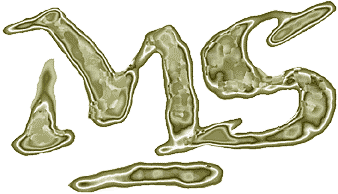
Mead Schaeffer
Mead Schaeffer was born in 1898 in Freedom Plains, New York. He's of the same generation as Saul Tepper, Boris Artzybasheff, Rico Tomaso, Haddon Sundblom, Donald Teague, Floyd Davis, Edwin Georgi and Norman Rockwell - a generation that was to explode into the pages of the nation's illustrated magazines in the 1930's through the 1950's.

Schaeffer attended the Pratt Institute in New York City and after his graduation in 1920 he took further studies with Harvey Dunn and Dean Cornwell. He very quickly got work in the waning issues of the smaller, traditional magazines. I have an illustration of his from a 1922 Scribners - which is too poorly printed to try to reproduce here.
Historical footnote: the powerful and influential magazines of the late 19th and early 20th centuries were Harpers, Scribner's and Century. Of lesser import were Everybodys, McClures, The American, Red Book, The Cosmopolitan and Leslie's. All of these had two things in common - they were about 7"x9" in size with about 100+ pages of editorial content. Other points of similarity were a monthly schedule and all of the advertisements grouped at the front and the rear of each issue. After World War I, these magazines began to decline in popularity, giving way to the new, larger format titles like The Ladies Home Journal, The Saturday Evening Post, Colliers, and The Women's Home Companion. They were larger (finally settling on about 11"x14") and some were actually published weekly. Each issue had less than 100 pages (generally) and the advertisements were scattered throughout the issue. This one fact contributed greatly to their success, for the sale and placement of color advertisements allowed the magazines to publish more and more color editorial content. Over the next 20 years, they completely supplanted their 19th century predecessors. Few of the old guard managed to make the transition: American, Red Book and Cosmopolitan survived but all the others either ceased publication by 1925 or became primarily literary magazines.
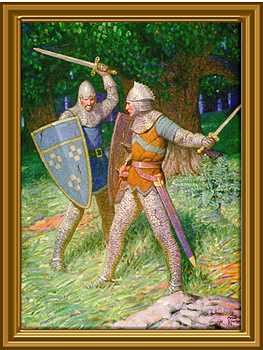 Back
to Schaeffer. 1922 was the same year he began doing book illustrations.
Just as Scribner's had their classics with mostly Wyeth illustrations, Dodd-Mead began a similar
series with Schaeffer doing the majority of the titles. Quite
an honor for a 24-year-old. His earliest books were Herman Melville
titles: Moby Dick (1922 - see image above), Typee
(1923) and Omoo (1924). He also did a pair of Rand McNally
titles in their adventure/classic series in 1924: Adventures
of Remi and King Arthur and His Knights. These early
efforts represent the first of three very distinct stylistic approaches
of his career.
Back
to Schaeffer. 1922 was the same year he began doing book illustrations.
Just as Scribner's had their classics with mostly Wyeth illustrations, Dodd-Mead began a similar
series with Schaeffer doing the majority of the titles. Quite
an honor for a 24-year-old. His earliest books were Herman Melville
titles: Moby Dick (1922 - see image above), Typee
(1923) and Omoo (1924). He also did a pair of Rand McNally
titles in their adventure/classic series in 1924: Adventures
of Remi and King Arthur and His Knights. These early
efforts represent the first of three very distinct stylistic approaches
of his career.
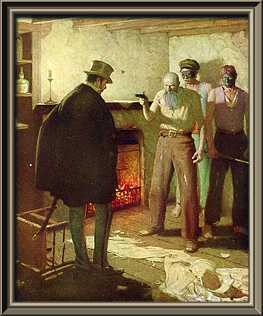 I
like to to think of these as his Pratt/Dunn-influenced
work. They're competent, even strong occasionally, but they lack
the power of composition and execution that was to come. A good
example is the scene from King Arthur at left. It's okay,
but the posed aspects overwhelm the painting talent. I don't for
a minute believe that I'm looking at two men really fighting with swords, do you?
Other books from that Dodd-Mead series of the 1920's include:
Les Miserables (supposedly circa 1925, but it's possible
that the plates are dated 1929 - the style certainly supports
a later date or else exposure to Dunn or Cornwell. See image at
right), The Wreck of the Grosvenor (no date) and The
Cruise of the Cachalot (1926).
I
like to to think of these as his Pratt/Dunn-influenced
work. They're competent, even strong occasionally, but they lack
the power of composition and execution that was to come. A good
example is the scene from King Arthur at left. It's okay,
but the posed aspects overwhelm the painting talent. I don't for
a minute believe that I'm looking at two men really fighting with swords, do you?
Other books from that Dodd-Mead series of the 1920's include:
Les Miserables (supposedly circa 1925, but it's possible
that the plates are dated 1929 - the style certainly supports
a later date or else exposure to Dunn or Cornwell. See image at
right), The Wreck of the Grosvenor (no date) and The
Cruise of the Cachalot (1926).
About this time (1926-27) must be when he began to study with
Dean Cornwell. This
is the second stylistic phase and the change in his work on the
Dodd-Mead classic series is dramatic. (Unfortunately, many of
the D-M books lack meaningful dates, so I'm going to treat them
as a group that was created between 1926 and 1930.)
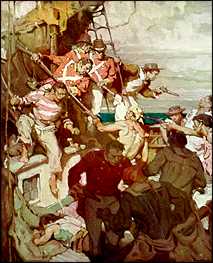
|
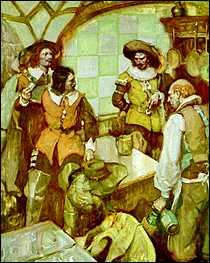
|

|
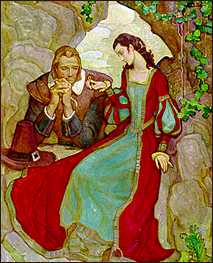
|
| Tom Cringle's Log | The Three Musketeers (1929) | The Count of Monte Cristo | Lorna Doone (1930) |

Another great image The Count of Monte Cristo
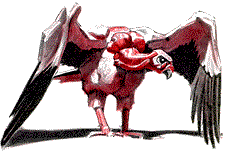 This mature
style was also put to good use throughout the 1930's and early
1940's in hundreds of magazine illustrations for Women's Home
Companion, Ladies Home Journal, Good Housekeeping,
Redbook and others. Perhaps the most memorable were those
he did for Raphael Sabatini's Capt. Blood stories
in The American. Below is a sample from the Sept, 1936
issue. You can click on the image for a full-size (14" -
112k) version. The Brangwyn influence
is diluted, but still evident.
This mature
style was also put to good use throughout the 1930's and early
1940's in hundreds of magazine illustrations for Women's Home
Companion, Ladies Home Journal, Good Housekeeping,
Redbook and others. Perhaps the most memorable were those
he did for Raphael Sabatini's Capt. Blood stories
in The American. Below is a sample from the Sept, 1936
issue. You can click on the image for a full-size (14" -
112k) version. The Brangwyn influence
is diluted, but still evident.

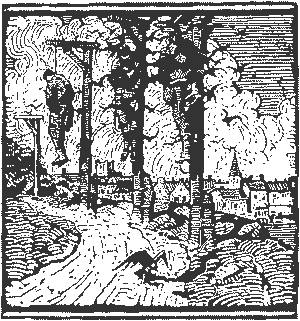 Many
of these later titles also contain his pen & ink and woodcut
illustrations. This image at left is from The Black Buccaneer,
which is copyright 1920, but is most assuredly from this later
period (1927-1940). The color illustrations for this title bear
the unmistakable stamp of Cornwell.
Many
of these later titles also contain his pen & ink and woodcut
illustrations. This image at left is from The Black Buccaneer,
which is copyright 1920, but is most assuredly from this later
period (1927-1940). The color illustrations for this title bear
the unmistakable stamp of Cornwell.
Schaeffer was a close friend of Norman Rockwell and posed for him on occasion. In 1942, Schaeffer abandoned the romantic adventure milieu in favor of more realistic subject matter. According to a quote in Susan E. Meyer's 1981 book, Norman Rockwell's People, "I suddenly realized I was sick of it all - sick of painting dudes and dandies. I longed to do honest work, based on real places, real people and real things." Which sounds all well and good, but he had always gone to great lengths to put realism into his paintings, often traveling to exotic locales so as to get the images right for a book or story. All of the people, places and things he'd been painting were very "real." Maybe it was Rockwell that influenced him, but World War II may have changed his perspective, also.
 He
inaugurated this third stylistic phase with a series of paintings
depicting the 14 branches of the U.S. military. These were done
at the same time as Rockwell's Four Freedoms. Both
projects were sponsored by The Saturday Evening Post and
Schaeffer's appeared as covers for the magazine. He did other
Post covers in this new style, too. At right is a sample
from the Feb. 2, 1946 issue (image is from Fred Taraba's Step-by-Step
article).
He
inaugurated this third stylistic phase with a series of paintings
depicting the 14 branches of the U.S. military. These were done
at the same time as Rockwell's Four Freedoms. Both
projects were sponsored by The Saturday Evening Post and
Schaeffer's appeared as covers for the magazine. He did other
Post covers in this new style, too. At right is a sample
from the Feb. 2, 1946 issue (image is from Fred Taraba's Step-by-Step
article).
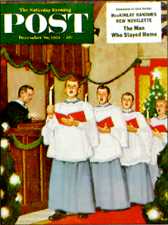 His
last Post cover was December 26, 1953 (see image at left).
He faded into retirement after that. He died in 1980.
His
last Post cover was December 26, 1953 (see image at left).
He faded into retirement after that. He died in 1980.
 To learn more about Mead Schaeffer, see:
To learn more about Mead Schaeffer, see:| Illustrating for the Saturday Evening Post | Ashley Halsey, Jr., 1950 Arlington House |
| 200 Years of American Illustration | Henry C. Pitz, 1977 Random House |
| The Illustrator in America 1880-1980 | Walt and Roger Reed, 1984 Madison Square Press |
| Mead Schaeffer: The Romance of the Brush | Fred Taraba in Step-by-Step Vol. 8 No. 5, Sept/Oct 1992 |
| Covers of the Saturday Evening Post | Jan Cohn, 1995 Viking Studio |
| The Vadeboncoeur Collection of Knowledge | Jim Vadeboncoeur, Jr. 1999 |
|
Illustrations are copyright by their
respective owners. This page written, designed & © 1999 by Jim Vadeboncoeur, Jr. Updated 2011. |
